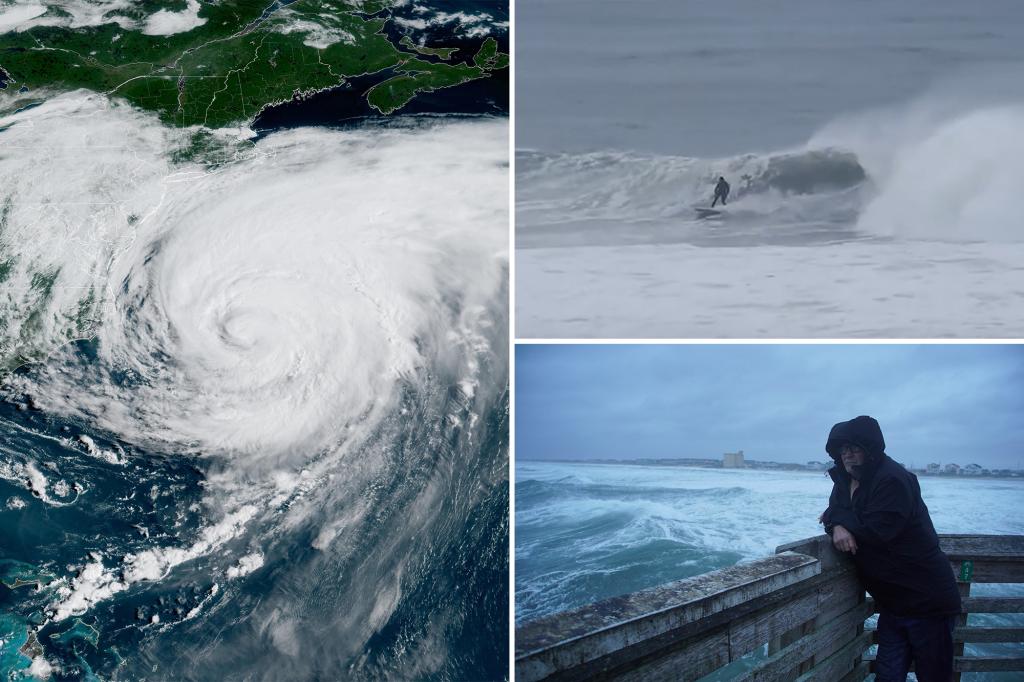Strong winds and waves battered Nantucket and Martha’s Vineyard and dangerous rip currents threatened from the Carolinas to New England as Hurricane Erin made its way farther out to sea Friday.
The storm was forecast to cause possible coastal flooding into the weekend along the East Coast but was also expected to weaken gradually.
Despite being twice the size of an average hurricane, Erin so far has managed to thread the needle through the Atlantic between the East Coast and several island nations, limiting its destructiveness.
On North Carolina’s Outer Banks, waves breached dunes in the town of Kill Devil Hills on Thursday evening, and water and sand pooled on Highway 12.
Although damage assessments were still underway, the low-lying islands appeared to have dodged widespread trouble.
A tropical storm warning remained active on Bermuda, where residents and tourists were told to stay out of the water through Friday.
But warnings along the coasts of North Carolina and Virginia were discontinued.
Communities along the mid-Atlantic and southern New England coast could see tropical storm-force wind gusts through early Friday, according to the National Hurricane Center in Miami.
The National Weather Service issued coastal flood warnings for places as far north as New York and New Jersey.
Beaches were closed to swimming Thursday in New York City, but more than a dozen surfers still rode waves at Rockaway Beach in Queens.
Scott Klossner, who lives nearby, said conditions were great for experienced surfers.
“You wait all year round for these kinds of waves. It’s challenging, really hard to stay in one place, because there’s a heavy, heavy, heavy rip,” he said.
“But this is what surfers want — a hurricane that comes but doesn’t destroy my house? I’ll take that.”
The Outer Banks — essentially sand dunes sticking out of the ocean a few feet above sea level — are vulnerable to erosion.
Storm surges can cut through them, washing tons of sand and debris onto roads and sometimes breaking up pavement and creating new inlets.
The dunes and beach took a beating the last two days, but Dare County Manager Bobby Outten said there have been no new inlets with Erin or significant structural damage to homes or businesses.
“All in all it’s not as bad as it could have been,” Outten said. “Hopefully the worst of it is behind us.”
On Jennette’s Pier in Nags Head, where sustained winds reached 45 mph, dozens of onlookers snapped photos of the huge waves crashing into the structure amid driving rain.
“This is nature at her best,” Nags Head resident David Alan Harvey said. “I love this. I love these storms.”
Erin has fluctuated in intensity since forming nearly a week ago but remained unusually large, stretching across more than 600 miles.
It was still a Category 2 storm with maximum sustained winds around 100 mph, the hurricane center said. Erin was about 535 miles south-southwest of Halifax, Nova Scotia.
So-called Cape Verde hurricanes like Erin, which originate near those islands off the west coast of Africa, cross thousands of miles of warm ocean and are some of the most dangerous to North America.
Read the full article here


